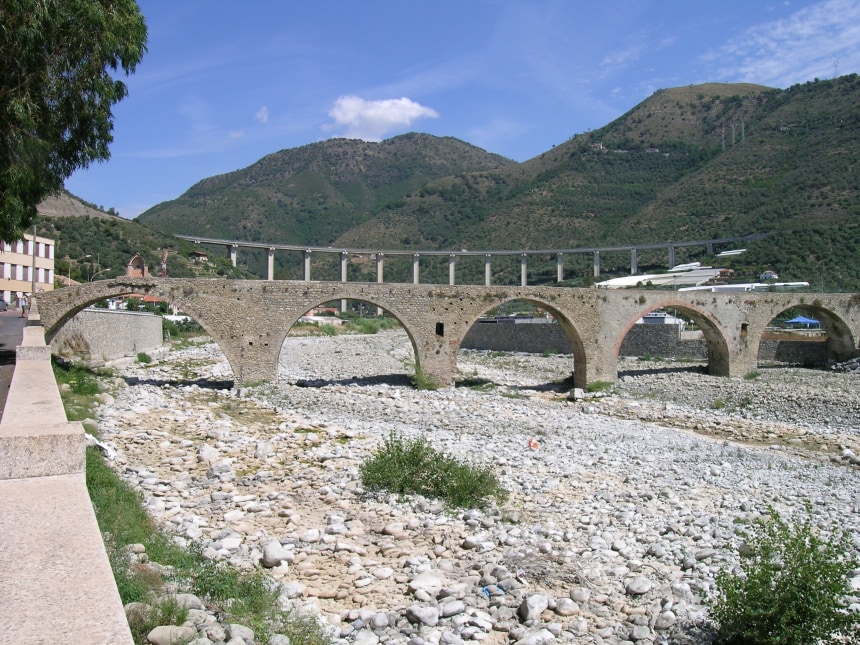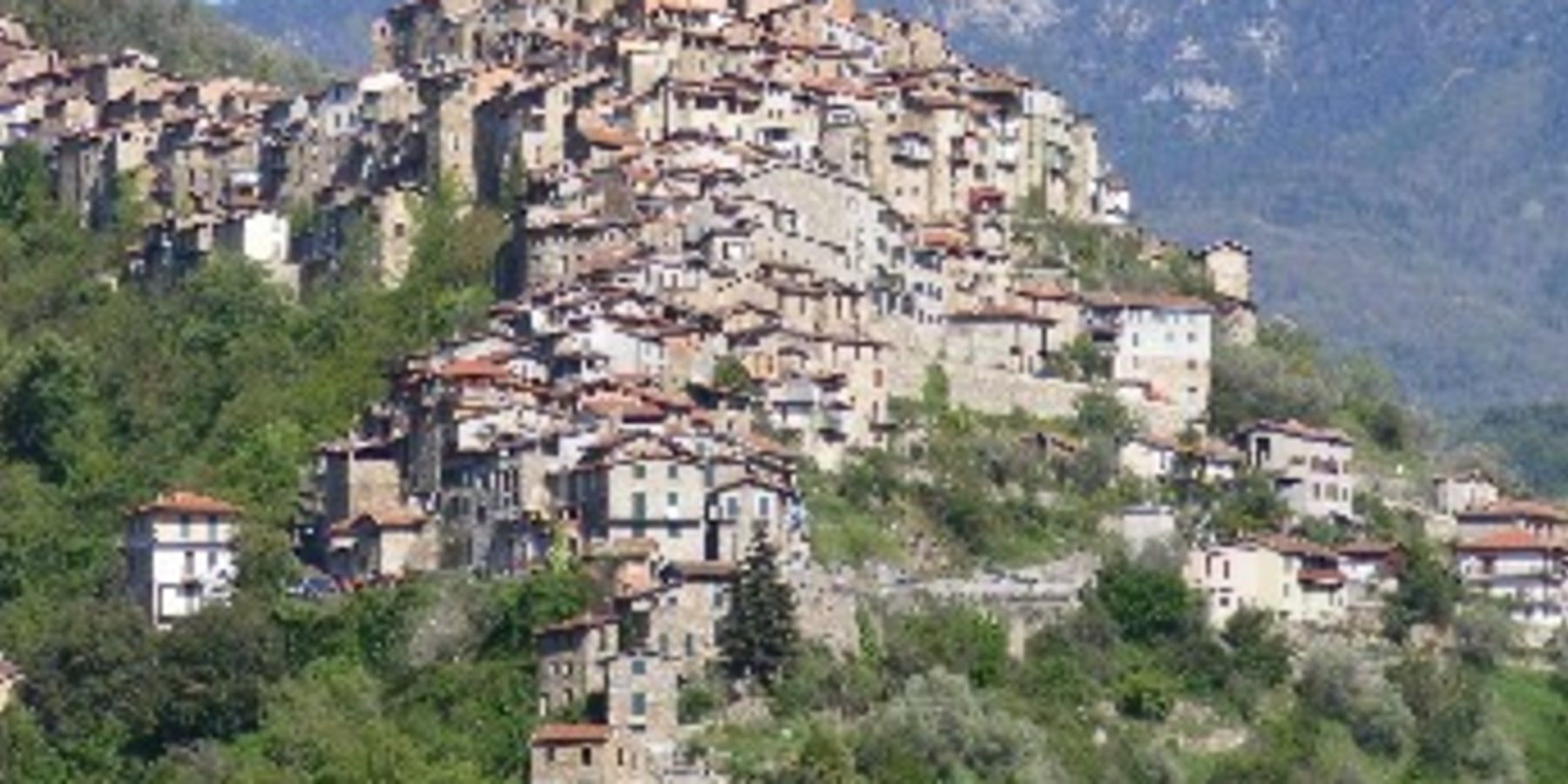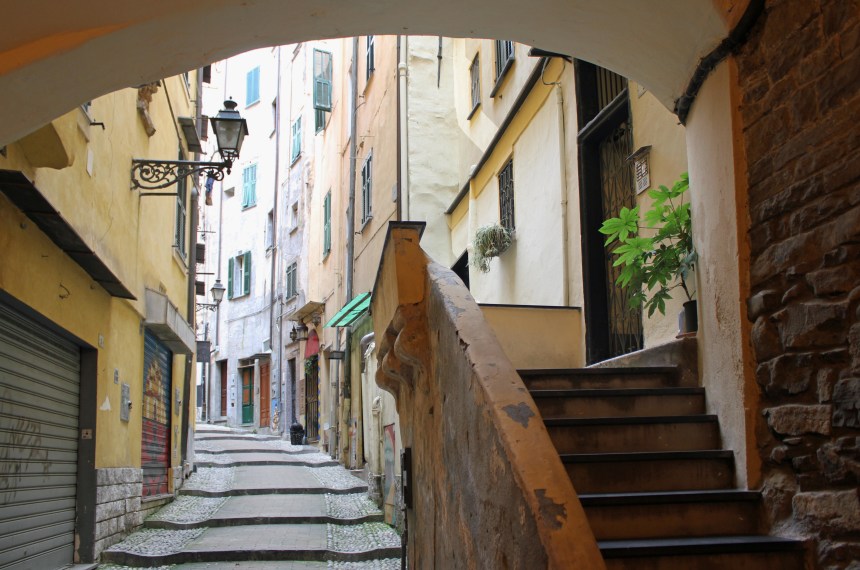
Bordighera: A day in the most English town of Italy
Bordighera was a little renaissance town facing the Ligurian sea, up to the arrival of the first tourists around 1860 from Great Britain. Those people were surprised by a very mild climate (at that time it was wintertime ) and by the astonishing presence of thousands of date palm that look-liked Bordighera to a Palestinian village .
In a very short time Bordighera was transformed into an English centre; more than 100 villas and 50 hotels were built for tourists, as well as the Anglican church , the English Bank, the Victoria Hall, the Tennis and Bridge Club and the International library .
Some very famous people have visited Bordighera. Claude Monet stay 3 months and painted 39 paints of Bordighera in 1884. 5 year before that the Queen of Italy went in Bordighera and she never forgot the place; in 1914 she made built a large villa that became her official residence. Also the famous French architect Gharles Garnier build a lovely villa that he utilized up to his death.
Luckily Bordighera was not heavily involved in the savage property speculation of the ’60 years , so also the modern part is a nice town rich of villas and parks.
I would like to propose two different tours of half day each.
The visit of the new part of Bordighera ( XIX century), that include the Anglican church , the Valdese Church ( the unique Italian Protestant population ) , the Victoria Hall and the International library ( only external ) , the Bicknell Museum , and the church of Terrasanta (project Charles Garnier ) ( about 3 hours) .
The visit of the Old Village , that include the church of Saint Ampelio ( external ) the Cape Gardens, the Old Village with the baroque church of Saint Maria Maddalena , the path of Monet in the palm grove and the Villa Garnier ( about 2 hours 30’ ) possibility to add the visit at the Mariani Foundation (entrance fee 5 euro for groups) a place where a famous Italian painter ( XIX century) built his atelier, still conserved with all the painter’s objects. The place has a large park of centennial olive trees where also Claude Monet painted some canvasses.
There is also the possibility to visit the Villa of the Queen Margherita ( the first Queen of Italy) , that has been completely restored and transformed in a marvellous museum , fitted with paintings, clocks, statues and furniture from the XIV the XIX century , with a beautiful panoramic terrace ( entrance fee 6 euro for groups)
Sanremo: The queen of the flowers Riviera
Sanremo was established in the year 1979 on the hill nowadays called “Pigna” ( pine cone) , and from the middle age was famous for the culture of lemon tree and date palm , this was due to the special winter climate already declaimed from a famous Italian writer ( Ludovico Ariosto) in 1532 . And when at the middle of XIX century also the rich people of northern Europe discovered the Riviera’s mild climate Sanremo became the most important tourist town of Italy.
From the 1860 to the 1930 more than 400 villas were built and also 100 hotels , people came from a lot of countries , England , Russia, Germany , Poland , Sweden etc.And every form of Christianity had it's own church ; the Russian church, the Luteran church , the Polish church, the Anglican church, the Scottish church .
Of the most important guests we have had the Czarina of Russia Maria Alexandrovna , the Emperor of Germany Frederick III° , the scientist Alfred Nobel , Piotr Caicovskij , Richard Wagner , and many others .
Sanremo is the seat of the oldest Casino of Italy still operating .
I would like to propose two different tours in Sanremo and three others in proximity :
The visit of the centre with the Russian Church , the Casino (both with the possibility to have a guided visit inside ) , the Romanic cathedral of Saint Siro , the baroque church of Saint Stephen and the Pigna ( middle age town) ( about 2 hours , 3 with visit of Casino or Russian church ) .
The visit of the Villa of the Emperor of Germany ( first floor only) and his park , the large park of Villa Ormond , and the Villa Nobel ( about 2 hours 30’ ) .
The visit of the village of Bussana Vecchia , a place destroyed by an earthquake in 1887 that remained a ghost village up to the arrival of some artist in 1950 ; they restored the less damaged houses and today the place is rebirth maintaining the aspect of 130 years ago.
Unluckily also the road is remained the same , so is possible to arrive at the village only with cars or little buses ( maximum 19 people) , or with a 45 minutes walk on the old path from the Village of Bussana Nuova ( 5 km from Sanremo). The visit of the hamlet of Coldirodi a panoramic place on a hill that has a picture gallery with paintings from XV to XIX century and with a rich historical library of the same period.
Sanremo's climate is due to the mountains that surround it , I want to propose a hike to a nice peak 1.100 meters high . The walk start from S. Romolo, a nice place among the woods 15 km from Sanremo , through easy paths in about 1 hour and 30’ is possible to arrive on the top of mount Caggio that has a fantastic view on the Riviera , the Cote d’Azur and the Ligurian Alps .
Taggia: A place between history and traditions

The town is full of sumptuous buildings from XIII to XVIII century , there are two rich convents ; especially the Dominican convent has the most important picture gallery of western Liguria , there is a very impressive middle age bridge ( 260 meters long) and some magnificent churches .
This richness was due to the fact that the place is on the mouth of the Argentina valley, an important road towards Piedmont , and the site where is born the best Ligurian olive oil , the Taggiasca .
Still nowadays all the olive trees in the county ( county of Imperia) are constituted by Taggiasca trees . The visit of the main sites it takes 3 hours and to have a full day in the outskirts I suggest to visit the Rock Villages of the Argentina Valley like Badalucco, Montalto Ligure and Triora .
The visit start from the main square , then we’ll see parish church with some important paintings and sculptures ( XVII century) , then the old fountain ( XV century ) palazzo Lercari and palazzo Spinola and after with an easy ten minutes walk we arrived at the convent of saint Domenico ( XV century ) rich of beautiful polyptyches of the same age , we’ll visit the church, the painting gallery , the cloister , the winter chapel and the refectory . Later we proceed through the oldest street of the town ( XIII- XV century) to finish with the old bridge.
Environs :
Badalucco , is a little town placed near the river Argentina with two nice XVI century bridges, an intact historical centre and the possibility to visit an old oil mill .
Montalto Ligure , is a stone village put on a hill with a magnificent roman church ( XII century) a rich parish church and a nice view on the valley.
Triora , was the most important centre of the valley
Credits: xlibber https://flic.kr/p/fjPdca (cc by2.0); Hans Pohl https://flic.kr/p/nRuMmE (cc-by-NC-SA-2.0); Luca Galli: https://flic.kr/p/oqUBEu (cc by2.0)



